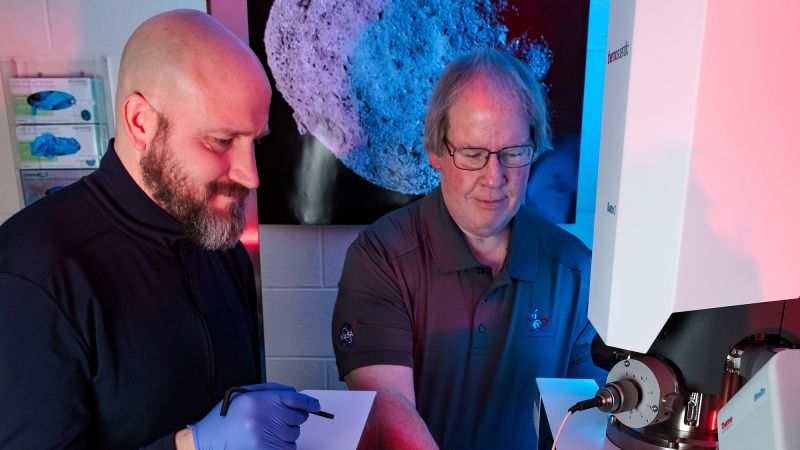In recent times, NASA has marked a significant achievement with its OSIRIS-REx mission, making bold strides in space exploration. This mission involved sending a spacecraft to the near-Earth asteroid Bennu, where it collected dust and rock samples from the asteroid’s surface. The spacecraft’s return, completed more than a year ago, culminated in a groundbreaking scientific endeavor, as NASA dispersed a 120-gram sample collected in October 2020 among researchers globally. This massive effort has led to remarkable discoveries that promise to unveil some of the mysteries surrounding the origins of life on Earth.
This week, scientists involved in analyzing the Bennu samples have shared their initial findings, which reveal that the asteroid is rich in various chemical building blocks critical to life. Detailed studies published on Wednesday highlighted the presence of amino acids and DNA components within Bennu’s geological offerings. Furthermore, researchers uncovered salts and minerals essential to life, including some that had never been observed in other asteroid samples. According to Dr. Daniel P. Glavin, a senior scientist for sample return at NASA’s Goddard Space Flight Center in Greenbelt, Maryland, these revelations are exciting. He noted that asteroids like Bennu likely acted as colossal chemical factories in space, delivering the raw materials necessary for life to Earth and other celestial bodies within our solar system.
Transitioning from the mysteries of space to the depths of the ocean, another astonishing discovery emerged regarding marine life. While typical corals appear to be stationary, anchored to the ocean floor, new research uncovered an intriguing behavior in a specific species known as Cycloseris cyclolites. This species of mushroom coral exhibits movement toward blue light waves through a jellyfish-like pulsing action. Living in high-energy reef zones, these corals, which can grow up to 3.5 inches (9 centimeters), have adapted to survive and compete for space by moving deeper into the water.
In the realm of archaeology, a fascinating discovery was made at the Valencina archaeological site near Seville, Spain. Excavations revealed an astounding collection of 270,769 shell beads, which are regarded as the largest documented assemblage of such artifacts in the world. Researchers believe these beads were crafted into dazzling outfits previously worn by women in the area around 5,000 years ago. It is estimated that creating such intricate attire would take approximately ten individuals working diligently for over seven months. This collection highlights the notable status of women in this prehistoric society, as they were buried adorned in these elaborate beaded garments.
Meanwhile, in the Turks and Caicos islands, a dramatic event unfolded when Lori Kaine, a local resident, heard a loud explosion one evening. To her amazement, she witnessed the upper stage of a SpaceX Starship launch system breaking apart minutes after taking off from South Texas. The incident scattered debris across local beaches and driveways, garnering attention and criticism aimed at SpaceX’s operational protocols in launching test flights. This has raised broader concerns about the company’s approach towards developing its spacecraft.
Lastly, a striking environmental observation occurred in the eastern Sierra Nevada, where the elusive Mount Lyell shrew was photographed for the first time. Wildlife photographer Vishal Subramanyan, accompanied by student researchers, captured images of these creatures that had evaded human cameras until now. This tiny mammal’s elusive nature, combined with advances in wildlife photography, highlights the continuous efforts to document and understand the rich biodiversity of our planet.
In conclusion, this rich narrative of discoveries from space to the ocean depths underscores the continuous effort of scientists and researchers across disciplines. From unveiling the potential origins of life on Earth, exploring the behaviors of marine creatures, shedding light on ancient societies, and addressing ongoing environmental concerns, these stories reflect the intricate and dynamic tapestry of our universe. For those captivated by these explorations and findings, signing up for updates, including the Wonder Theory newsletter from CNN, will provide ongoing insights into the marvels of science and space exploration.



